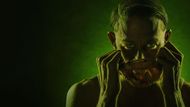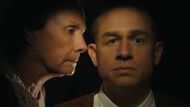Netflix's Monster: The Ed Gein Story was released on October 3, 2025. It offers a dramatized version of Ed Gein’s actual crimes. His horrific acts in the 1950s have been credited with inspiring horror films such as Psycho and The Texas Chain Saw Massacre.
Although the series does justice to Gein’s awful crimes of digging up bodies and making human-skin objects, it takes considerable creative license. This is especially evident in portraying Gein as the killer of numerous victims beyond the two he admitted to killing, including his brother Henry.
The series, written by Ryan Murphy and Ian Brennan, merges fact and fiction by presenting the story through Gein's vision. It allows creative storytelling within the pretense of psychological subjectivity. This tactic allows Monster: The Ed Gein Story both to examine Gein's crimes and his cultural existence, although at the cost of historical veracity for dramatic purposes on many occasions.
Fact vs fiction in Netflix's Monster: The Ed Gein Story

Netflix's Monster: The Ed Gein Story mixes facts with dramatic license in creating a psychological profile that is almost historically truthful. The series integrates major reported facts surrounding Ed Gein’s crimes, such as his confessed murders of Mary Hogan and Bernice Worden. It also depicts his grave robbing and the macabre use of human bones and skin for making household objects. At the same time, the series invents and sensationalizes other aspects to add depth and emotional value to the story.
Facts properly represented in Monster: The Ed Gein Story:
Ed Gein was guilty of at least two murders. These include the murder of Mary Hogan, a tavern owner, in 1954, and that of Bernice Worden, a hardware store owner, in 1957. These are documented crimes that provide the foundation of the television series.
Authorities discovered macabre objects such as bowls made from skulls, a wastebasket made from human skin, a belt made of nipples, cut-off human heads, and desiccated vulvas kept in a shoebox. These details are accurately represented in the series.
Ed Gein's religious fanaticism, imposed on him by his mother Augusta and his rural, socially reclusive childhood, is also depicted with a reasonable amount of historical correctness. His mother's influence did have a significant effect on his troubled mental health, something the series emphasizes.
The sequence of Gein's offenses, arrest, and subsequent trial follows actual historical developments.
Fictionalized and dramatic embellishments in Monster: The Ed Gein Story:
The series sensationalizes Ed's alleged murder of his brother Henry, for which there is no real evidence. The real Henry Gein died long before Ed was taken into custody; the police ruled Henry's death either accidental or natural, not murder at Ed's hands.
The TV series character Adeline Watkins, love interest and grave-robbing co-conspirator, is not based on reported fact. In reality, little that can be learned about this woman's interactions with Ed, and the series admits ambiguity about her role.
Some of the victims depicted in the series, for instance, a woman referred to as Evelyn Hartley and missing hunters Victor Travis and Raymond Burgess, are shown dead in horrific circumstances. In reality, these individuals either never existed or had no relation to Gein. Their depiction serves to escalate fear and create dramatic tension, but it never actually happened.
The series presents various events, such as hallucinations and unrealistic sequences featuring dream meetings with Nazi war criminal Ilse Koch. These scenes have no basis in reality and are used symbolically to examine Ed’s mental health, not for historical accuracy.
Cultural icons like Alfred Hitchcock are fictionalized as obsessing over Gein in the series. This is a narrative device to show Gein's influence on horror films, not a literal historical truth.
Narrative purpose and artistic license in Monster: The Ed Gein Story

The series presents a distorted point of view through Ed Gein’s own mind. You can tell, right from the start, that Ian Brennan is playing with the boundaries of what’s real and what’s unfiltered imagination. It’s more like you’re trapped behind Ed’s cracked glasses, seeing the world all twisted and out of order.
The timeline jumps around, things get surreal, and you end up questioning what’s real and what’s just some dark hallucination.The show doesn’t give you a tidy recap of events; it wants to get under your skin and make you squirm about what makes people into monsters and how trauma festers in the shadows. It also examines how the media loves to turn real-life horror into popcorn entertainment.
The show isn’t just splattering blood for the sake of it; it’s taking giant creative swings, making things up when it feels like it, all to dig deeper into what freaks people out. It highlights just how much Ed Gein’s nightmare world oozed into pop culture, inspiring horror legends like Norman Bates in Psycho and Leatherface in The Texas Chain Saw Massacre. Monster: The Ed Gein Story blurs the lines between what actually happened and what has become twisted legend.
